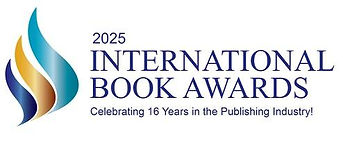Finding Inner Peace in Turbulent Times
- Brad Hutchinson

- Nov 13, 2024
- 4 min read
Updated: Nov 19, 2024

The Way
Randal Charboneau
(Painting Above)
In times of uncertainty and division, we often strive to reach an “other side”—an imagined place where life can finally settle, where we can relax, heal, and move forward. But in reality, there is no "other side." We are living in an era of rapid change and transformation. With transformation comes resistance, tension, and uncertainty. It’s as if we’re caught between two currents: one drawing us into an unfamiliar future, while the other pulls us back to the comfort of a known past. And as we work hard to maintain control in our own lives, the world around us can feel like it’s unraveling with ever greater intensity.
The answer lies not in resisting these forces but in finding our own center, a steady point within that remains grounded regardless of external chaos. By rooting ourselves in this inner balance—a state of mind neither too high nor too low—peace naturally emerges. This peace radiates outward, creating ripples of harmony in our environment simply through our presence. With this inner stability, our vision expands, our perspective shifts, and a clear path forward begins to appear, even amidst life’s storms.
“Dynamic Balance” teaches that social transformation begins as a personal journey. The peace and fulfillment we hope to find are not waiting in a distant tomorrow; they exist within us, here and now. But in the turbulence of daily life, it’s easy to lose sight of this inner calm. Conflict, noise, and negativity distract us from it, but they cannot erase it. Peace is always there, waiting for us to clear a path for it to surface.
Imagine inner peace as a bubble deep within the ocean. Naturally, this bubble wants to rise, expanding and moving toward the surface. Obstacles may push it down, but they cannot change its nature to ascend. Our inner peace is like that—it doesn’t need to be discovered, only freed.
One way to clear these obstacles is by embracing the ‘middle way,’ a principle of avoiding extremes to find balance. In a state of calm awareness, peace is present even amidst adversity. Understanding this concept is a paradigm shift, a new way of seeing that peace and balance are always there, underlying everything. Sometimes, small changes in perception can help us access this understanding.
Spotlight and Floodlight Awareness
The philosopher Alan Watts described two modes of awareness: ‘spotlight’ and ‘floodlight.’ Spotlight awareness focuses on specific tasks, sharpening our concentration. Floodlight awareness, on the other hand, is broad, opening our minds to the larger picture. Both are essential, yet society largely trains us in spotlight awareness. From an early age, we’re taught to value focus, discipline, and control. As a martial artist, I know firsthand the importance of focused attention. But without the counterbalance of floodlight awareness, intense focus can exhaust us, weaken our resilience, and leave us reactive to life’s challenges.
Floodlight awareness has historically been missing from Western mainstream culture, though recent mindfulness practices are helping bring it back. Mindfulness enables us to widen our perspective, letting us observe rather than react. Over time, it strengthens our ‘floodlight’ awareness, helping us to move beyond surface-level divisions and recognize our place in an interconnected evolution.
With this expanded perspective, we can start to see tensions and conflicts not as barriers but as energy propelling us toward a brighter future. Instead of getting caught in the minutiae of disagreements that spiral into personal attacks, we can rise above, embracing what Genku Kimura calls “Alignment Beyond Agreement.”
Alignment Beyond Agreement
“Alignment Beyond Agreement” represents a shift in perspective—a commitment to unity not through forced agreement but through shared purpose. It means welcoming diverse viewpoints while working toward a common goal. This approach allows communities and teams to thrive even amid differences.
For instance, most people share the goal of ending child abuse. From that common ground, we can explore varied opinions on achieving it—whether through restorative or retributive responses, focusing on victims or offenders, building collaborations across community organizations and social institutions... In today’s polarized world, meaningful change requires lifting conversations toward shared purpose and being receptive to diverse ideas. It’s not about taking sides but about elevating our perspective, casting a “floodlight” on the entire landscape to reveal the bigger picture.
The Path to Transformation Begins Within
There is no “other side” or perfect time of peace waiting after the storms. The journey is within us—through our own choices to center ourselves, build resilience, broaden our perspectives, and find alignment in shared purpose even amid disagreement. As we harmonize our inner and outer energies, peace rises naturally, touching those around us and gradually transforming the world.
This is the heart of Dynamic Balance: developing resilience to prevent external chaos from defining our lives and tapping into our spiritual core to gain a vision that recognizes the cohesive potential in today’s rapid evolution. From this elevated perception, previously unseen pathways open, helping us navigate life with greater clarity, creativity, and compassion.






Comments